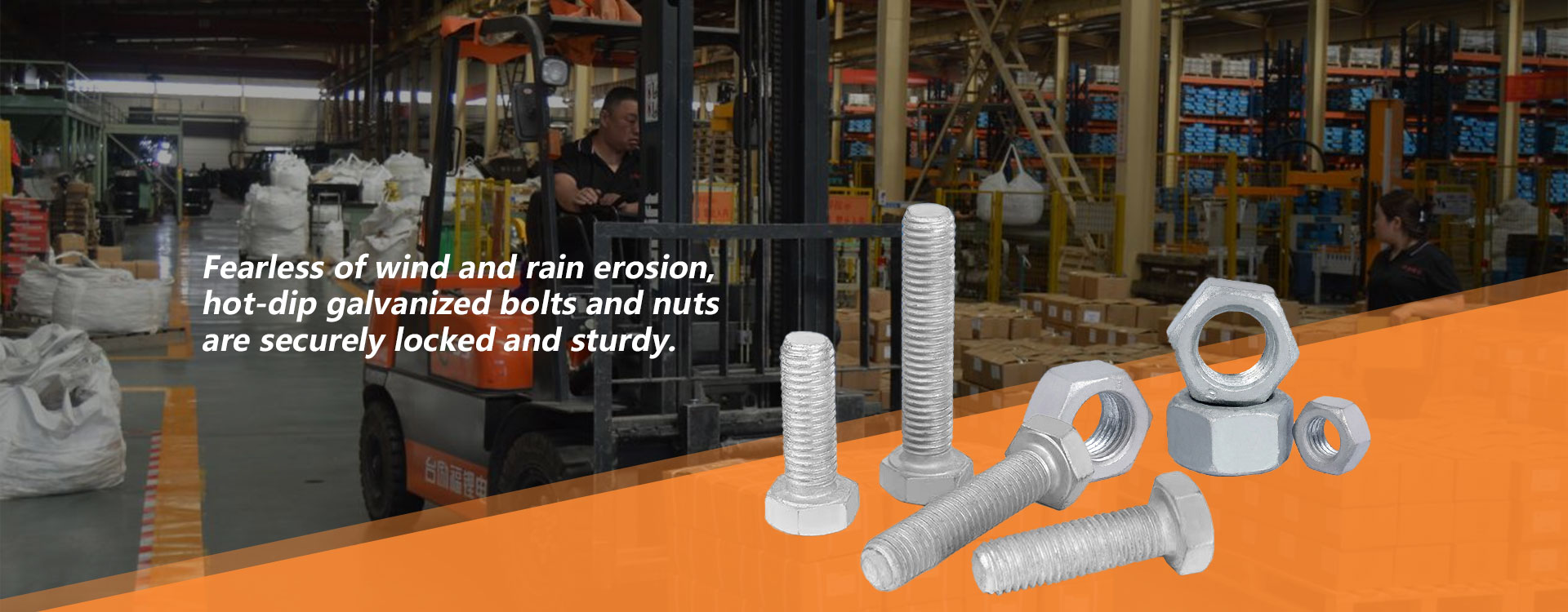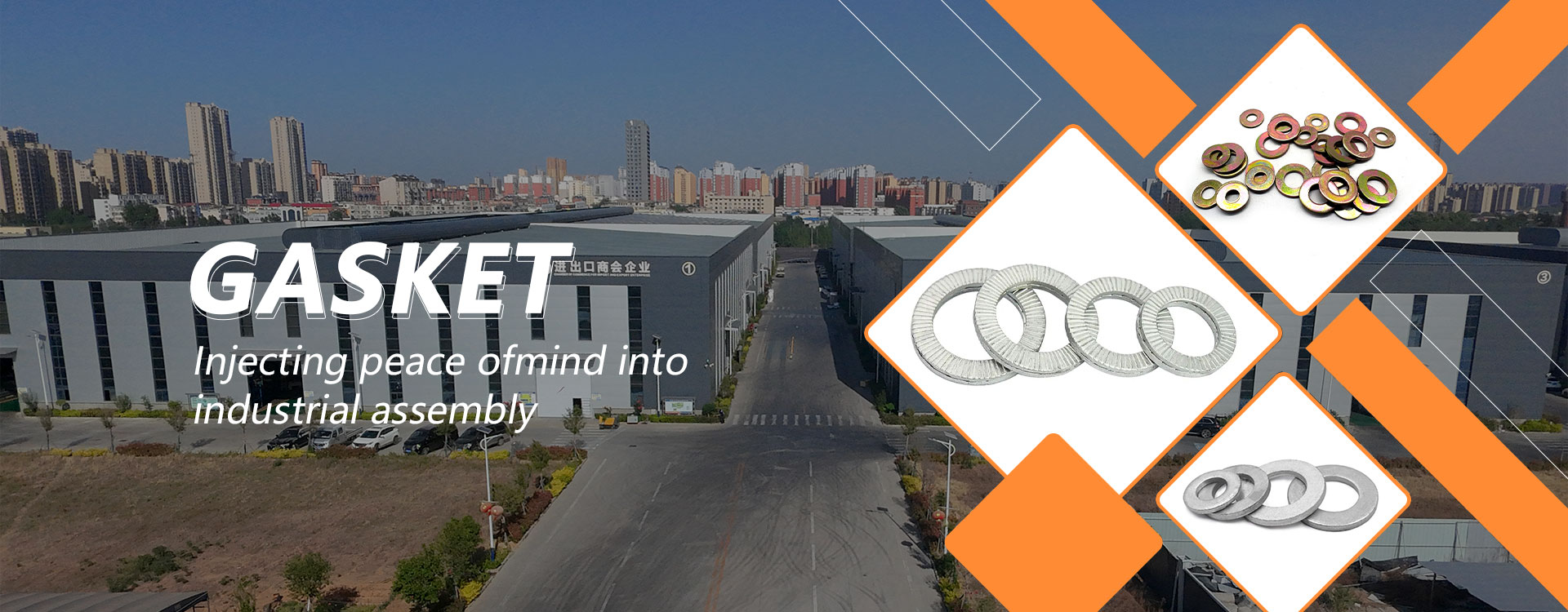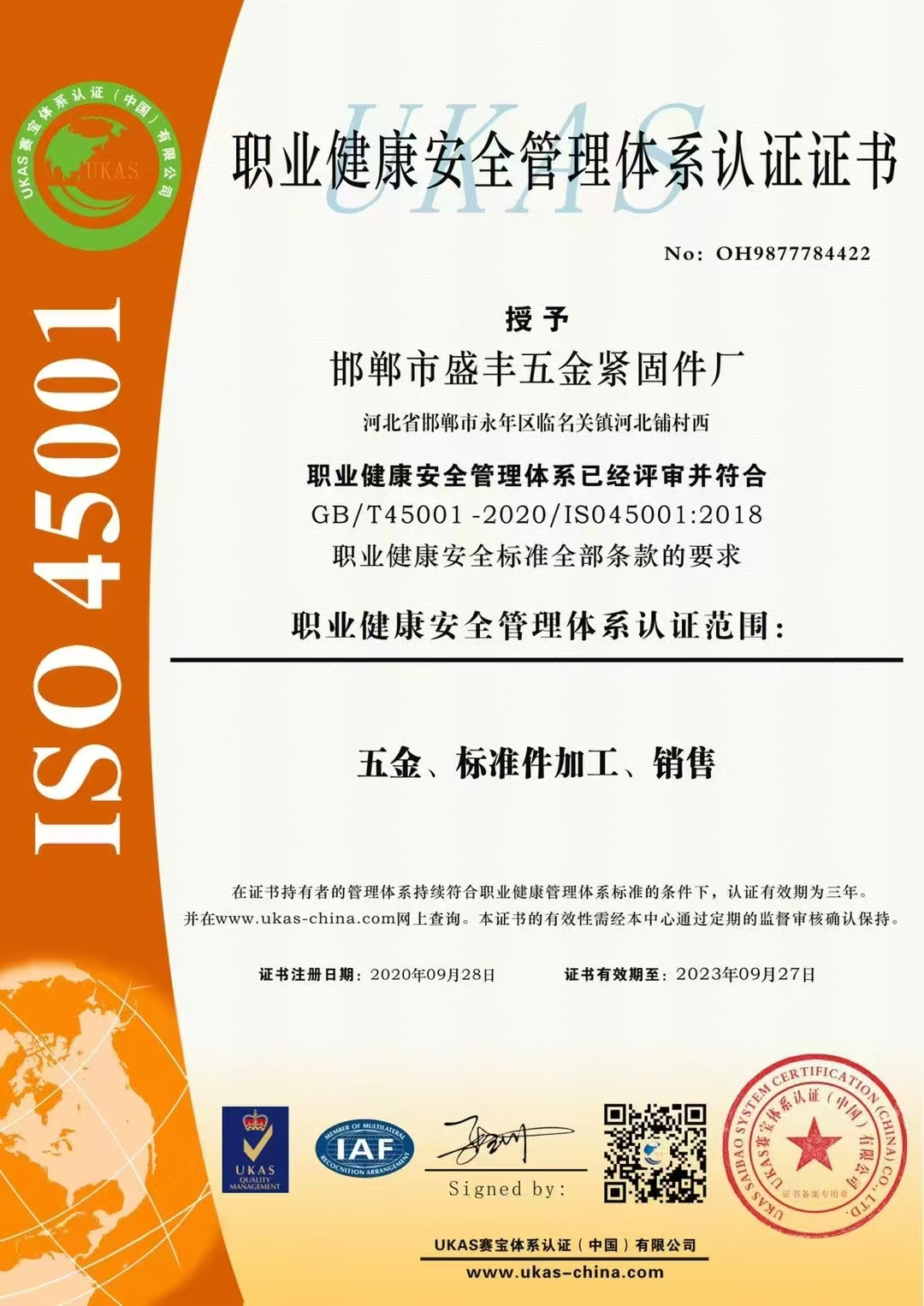- Chinese
- French
- German
- Portuguese
- Spanish
- Russian
- Japanese
- Korean
- Arabic
- Irish
- Greek
- Turkish
- Italian
- Danish
- Romanian
- Indonesian
- Czech
- Afrikaans
- Swedish
- Polish
- Basque
- Catalan
- Esperanto
- Hindi
- Lao
- Albanian
- Amharic
- Armenian
- Azerbaijani
- Belarusian
- Bengali
- Bosnian
- Bulgarian
- Cebuano
- Chichewa
- Corsican
- Croatian
- Dutch
- Estonian
- Filipino
- Finnish
- Frisian
- Galician
- Georgian
- Gujarati
- Haitian
- Hausa
- Hawaiian
- Hebrew
- Hmong
- Hungarian
- Icelandic
- Igbo
- Javanese
- Kannada
- Kazakh
- Khmer
- Kurdish
- Kyrgyz
- Latin
- Latvian
- Lithuanian
- Luxembou..
- Macedonian
- Malagasy
- Malay
- Malayalam
- Maltese
- Maori
- Marathi
- Mongolian
- Burmese
- Nepali
- Norwegian
- Pashto
- Persian
- Punjabi
- Serbian
- Sesotho
- Sinhala
- Slovak
- Slovenian
- Somali
- Samoan
- Scots Gaelic
- Shona
- Sindhi
- Sundanese
- Swahili
- Tajik
- Tamil
- Telugu
- Thai
- Ukrainian
- Urdu
- Uzbek
- Vietnamese
- Welsh
- Xhosa
- Yiddish
- Yoruba
- Zulu
- Kinyarwanda
- Tatar
- Oriya
- Turkmen
- Uyghur

-
 Exhibition site
Exhibition site -
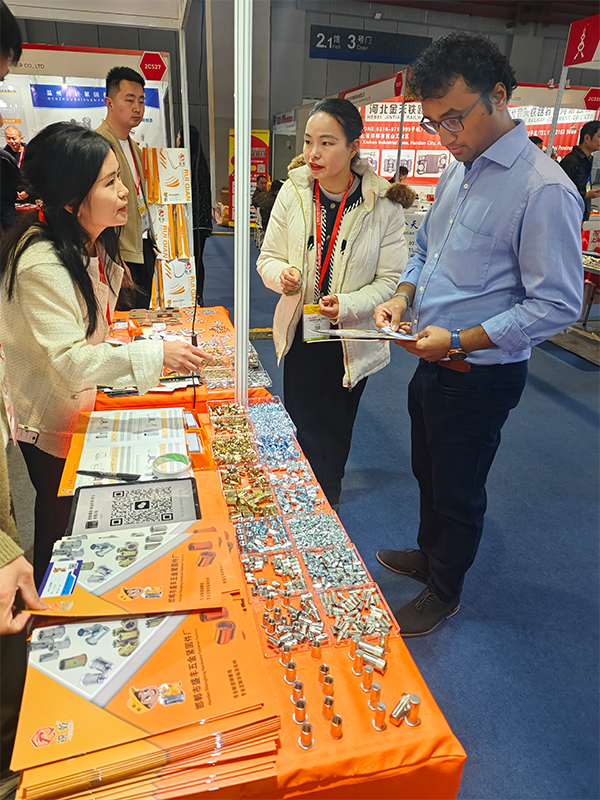 Exhibition site
Exhibition site
About Us
Shengfeng Hardware Fastener Factory
Handan Shengfeng Hardware Fastener Factory is located in Hebei Pu Tiexi Industrial Zone, Yongnian District, Handan City, adjacent to National Highway 107, with a superior geographical location and convenient transportation. Our factory is a professional manufacturer and seller of fasteners, with over 100 specifications in four categories: spring washers, flat washers, nuts, and expansion bolts.
Source manufacturers
High-quality products, reliable quality.
Survival by quality
Selling through Service
Make friends with integrity
Diversified business, comprehensive coverage
Survive by quality, sell by service, make friends by integrity.
As a comprehensive hardware fastener enterprise, Shengfeng's business covers the entire industry chain from production to sales. On the manufacturing side, the factory specializes in the manufacturing of hardware products, and its fastener manufacturing is particularly outstanding. Products such as spring washers and screws are widely praised in the market for their excellent quality. In terms of sales, whether it is wholesale large orders or retail business that meets scattered needs, Shengfeng can accurately connect and provide efficient services to customers. Moreover, the factory actively expands its manufacturing and sales business of plastic and rubber products, with a diversified product structure that fully meets the diverse needs of different industries and customers.
Advantages
Innovation driven, sustainable development
Shengfeng deeply understands that innovation is the driving force behind the development of enterprises. To this end, the factory continuously increases investment in technology research and equipment updates, actively introduces advanced production processes and automation equipment, and improves production efficiency and product quality stability.
-
Overall Equipment Effectiveness
-
Increase product added value
-
First-class equipment
-
Years of experience
-
Advanced technology
Committed to providing better products and services to global customers, and forging an outstanding brand in the field of fasteners.

Popular Products
With excellent product quality and good market reputation, Shengfeng Hardware Fasteners not only occupy a place in the domestic market, but also actively explore the international market and carry out import and export business of goods and technology. Our products are exported to multiple countries and regions, winning recognition and trust from international customers.
See more
Threaded rods
Premium tooth bar screw grade 8.8, 10.9, 12.9 Material: 45 # 40Cr, 35CrMoA, 42CrMo B7、 Double headed, fully fastened, various lathe precision machined special-shaped parts. Surface treatment: black, electroplated zinc, blue white, silver white, hot-dip galvanized, Dacromet, etc. Screw, also known as thread bar or fully threaded bolt, is mainly used for connecting, transmitting, and supporting in mechanical equipment Has the following characteristics: Connection function: Screw teeth usually do not have a head, and both ends have chamfers. It is a type of fastener with full thread on a threaded column. It can be used as a connecting element between thicker components, for example, when two thicker plates or parts need to be connected together, using screw teeth and nuts for fastening can provide reliable connections and ensure stable relative positions between components. Transmission function: capable of converting rotational motion into linear motion, or converting linear motion into rotational motion. When the screw thread is matched with a nut with corresponding threads, the rotation of the screw thread can cause the nut to move in a straight line along the axis direction of the screw thread, achieving precise displacement transmission. On the contrary, when the nut moves in a straight line, it can also drive the screw teeth to rotate. This transmission method is widely used in many mechanical equipment, such as the feed system of machine tools and the conveying device of automated production lines, which can achieve precise position control and motion transmission. Support function: Due to the strength and rigidity of the screw teeth, they can also serve as support in some structures. For example, in certain frame structures or cantilever structures, screw teeth can serve as support members to withstand certain axial loads and lateral forces, helping to maintain the stability and integrity of the structure. Multiple thread types: There are different thread types for screw threads, such as triangular thread, trapezoidal thread, rectangular thread, serrated thread, etc. Each thread type has its specific profile and purpose. For example, trapezoidal tooth thread processing is relatively simple, and the tightness of the nut and screw can be adjusted according to the depth of the teeth. The internal and external threads are tightly adhered to the conical surface and are not easy to loosen. The process is good, the root strength is high, and the alignment is good. It is commonly used for transmission threads; The serrated tooth thread has an unequal trapezoidal tooth shape, with a small tooth flank angle on the working surface and a large tooth flank angle on the non working surface. The external thread root has a large rounded corner, which can reduce stress concentration. It also has the characteristics of high efficiency in rectangular thread transmission and high strength of trapezoidal thread root, and is suitable for one-way force transmission threads. Wide application fields: Screw teeth are widely used in many fields such as electromechanical seismic resistance, aerospace industry, mechanical and chemical industry, building decoration, furniture manufacturing, etc. due to their functions and characteristics. In the field of construction, it can be used for ceiling installation on construction sites, etc; In the field of furniture, it is commonly used to connect various components of furniture; In the field of mechanical manufacturing, it plays an important role in various machine tools, automation equipment, and transmission devices. Mon M4 M5 M6 M8 M10 M12 M14 M16 M18 M20 M22 M24 M27 M30 M33 M36 M39 M42 p 0.7 0.8 1 1.25 1.5 1.75 2 2 2.5 2.5 2.5 3 3 3.5 3.5 4 4 4.5
Read More 
Pressure rivet nuts
Function -Efficient connection: Through riveting technology, nuts can be quickly and firmly connected to thin plates and other materials without welding or tapping, improving assembly efficiency. In electronic product assembly, the nut can be quickly pressed and riveted onto the thin plate of the circuit board to achieve connection with other components. -Provide reliable threaded connections: Provide standard internal threaded connections for bolts and other components to ensure stability and reliability of the connection, withstand certain torque and tension, and ensure that the connection between components is tight and not loose. -Enhance the strength of thin plate connections: For thinner plates, rivet nuts can increase the strength and load-bearing capacity of the connection points, disperse pressure, and avoid deformation or damage of the plate due to excessive local pressure. For example, riveting nuts on thin sheets of car bodies can improve the overall strength of the body structure. -Convenient disassembly and maintenance: The threaded connection method of the rivet nut makes the disassembly and maintenance of components convenient. The bolts can be easily unscrewed for component replacement or maintenance without damaging the board. Purpose -Electronic and electrical industry: widely used for connecting components such as casings and circuit boards of electronic products such as computers, mobile phones, and televisions, such as fixing batteries inside mobile phones and connecting circuit boards. -Automotive manufacturing industry: used for connecting parts such as car bodies, interior parts, engines, etc., such as installing car seats and fixing instrument panels, which can meet the requirements of efficient assembly and high-strength connection in automotive production. -Aerospace field: It plays a role in the connection of aircraft interiors, structural components, etc., and can meet the strict requirements of lightweight and reliability in the aerospace field while ensuring connection strength. -Hardware products industry: Used for connecting and fixing components in various metal furniture, doors and windows, kitchen and bathroom equipment, such as installing hinges on furniture and fixing handles on doors and windows. product grade -Grade A: High precision, strict dimensional tolerance control, good surface quality, suitable for applications with high requirements for connection accuracy and reliability, such as aerospace, high-end electronic equipment manufacturing, and other fields. -B-class: slightly inferior in accuracy and quality compared to A-class, capable of meeting the connection requirements in general industrial production, commonly used in industries such as general machinery manufacturing and automotive parts production. Material performance grade -Carbon steel material: commonly available in grades 4.8 and 8.8. 4.8 grade carbon steel rivet nut, with a nominal tensile strength of 400MPa and a yield strength ratio of 0.8, suitable for connection applications with general strength requirements; 8.8 grade carbon steel rivet nut, with a nominal tensile strength of 800MPa and a yield ratio of 0.8, is commonly used in mechanical connections with high requirements for strength and reliability. -Stainless steel material: commonly labeled as A2-70, A4-80, etc. The “A2” in A2-70 represents the second group A2 material of austenitic steel, and “70” represents the performance grade of the product, with a nominal tensile strength of 700MPa; The tensile strength of A4-80 is 800MPa, which has better corrosion resistance and is suitable for harsh corrosive environments.
Read More 
External hexagonal internal expansion screws
The functions and roles of expansion screws mainly include the following: -Connection and fixation: It can firmly connect or fix objects to various substrates, such as fixing metal components, wooden furniture, electrical equipment, etc. to walls, ceilings, or floors, ensuring that they will not easily loosen or fall off during use. -Provide strong tensile and shear forces: The expansion screw is designed with a special structure. When tightening the nut, the screw will drive the expansion tube to expand, making it tightly fit with the substrate, thereby generating a large frictional and biting force. It can withstand large tensile and shear forces and meet the load-bearing needs in different scenarios. -Adapt to different substrate materials: Whether on hard substrates such as concrete, brick walls, or stone, or on relatively soft substrates such as wood and plastic, as long as the appropriate expansion screw model and specifications are selected, reliable fixation can be achieved. -Easy to install and disassemble: During installation, simply drill a hole in the base, insert the expansion screw into the hole, and tighten the nut to complete the installation. If disassembly is required, unscrew the nut and the expansion screw can be removed from the base, and the damage to the base is relatively small, making it easy for subsequent maintenance or component replacement.
Read More 
Four-claw nuts
Function 1. Tightening function: By cooperating with bolts, it plays a role in connecting and fastening two or more components.2. Pressure dispersion: The four claws can distribute pressure over a larger area, reducing local pressure on the connecting components and preventing damage.3. Increase friction: Compared to ordinary nuts, four jaw nuts have a larger contact area with the connected components, providing greater friction and making the connection more stable. Purpose 1. Mechanical manufacturing: Used in the assembly of various mechanical equipment to connect different parts and ensure the structural stability of the equipment.2. In the field of architecture: it can be used to connect components in building structures, such as steel beams, steel columns, etc.3. Automotive manufacturing: plays an important role in the assembly of parts such as the engine and chassis of a car.4. Furniture manufacturing: used to connect various components of furniture to make it more sturdy and durable. Mon M4 M5 M6 M8 M10 P 0.7 0.8 1 1.25 1.5 ds 5.6 6.5 7.7 10 12 h 6.95 9.15 10.3 12.75 14.5 dk 15 17 19 22 25.5 k 0.95 1.15 1.3 1.75 1.5
Read More 
Hot-dip galvanized bolts
Function -Connection fastening: By cooperating with nuts and utilizing the mechanical principle of threads, two or more components can be tightly connected and fixed together, capable of withstanding various loads such as tension and pressure, ensuring the stability and reliability of the connection structure. -Corrosion prevention: The hot-dip galvanized layer can form a protective film of zinc iron alloy on the surface of the bolt, which has good chemical stability and can effectively prevent the corrosion of the bolt substrate by substances such as oxygen, moisture, acid and alkali salts in the atmosphere, extending the service life of the bolt. -Wear resistance: The hot-dip galvanized layer increases the surface hardness of the bolt, reducing the wear caused by contact with other components during assembly and use, ensuring the dimensional accuracy and performance of the bolt, and enabling it to be reused multiple times. Purpose -In the field of architecture: used for connecting steel structures in building structures, such as the connection nodes between steel beams and steel columns; It is also used for fixing embedded parts in concrete structures, installing building curtain walls, and installing glass curtain walls in large commercial buildings. -Power engineering: used for the connection and fixation of various components of transmission towers in the construction of transmission lines; In the substation, it is used for the installation and fixation of electrical equipment, such as transformers, switchgear, etc. -Mechanical manufacturing: The manufacturing and assembly of various types of mechanical equipment cannot do without hot-dip galvanized bolts, such as in machine tools, industrial robots, agricultural machinery and other equipment, used to connect various mechanical components and ensure the normal operation of the equipment. -Automobile manufacturing: The assembly of the engine, chassis, body and other parts of the car requires the use of hot-dip galvanized bolts, such as the assembly of the engine cylinder block, the connection of the chassis suspension system, and the fixation of the body shell. -Bridge engineering: Whether it is highway bridges or railway bridges, hot-dip galvanized bolts are used for connecting bridge steel structures, fixing bridge supports, and installing bridge ancillary facilities, ensuring the structural safety and stability of bridges.
Read More 
Anti loosening gasket
Enhance friction: Anti loosening gaskets can increase the friction between nuts, bolts, and the connected parts. Like toothed anti loosening gaskets, their toothed structure can be embedded into the surface of the connecting parts, generating significant friction and preventing the nut from rotating due to external forces such as vibration.
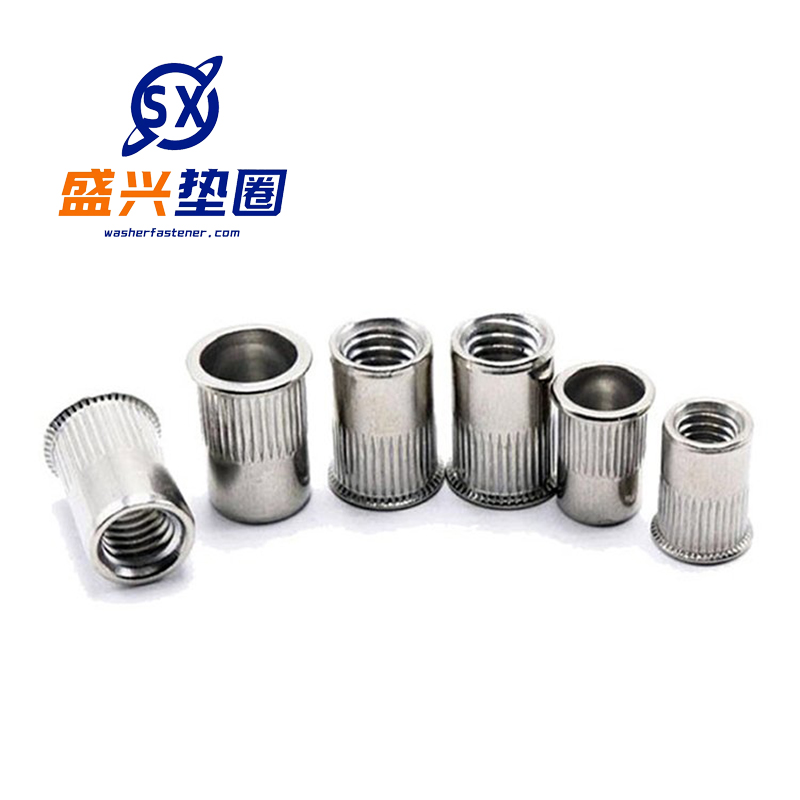
Pull rivet nut
Rivet nuts, as an innovative fastening solution, play a key role in many industrial and manufacturing fields with their unique design and excellent performance.

Internal expansion screw
Connection and fixation: It can firmly connect or fix objects to various substrates, such as fixing metal components, wooden furniture, electrical equipment, etc. to walls, ceilings, or floors, ensuring that they will not easily loosen or fall off during use.
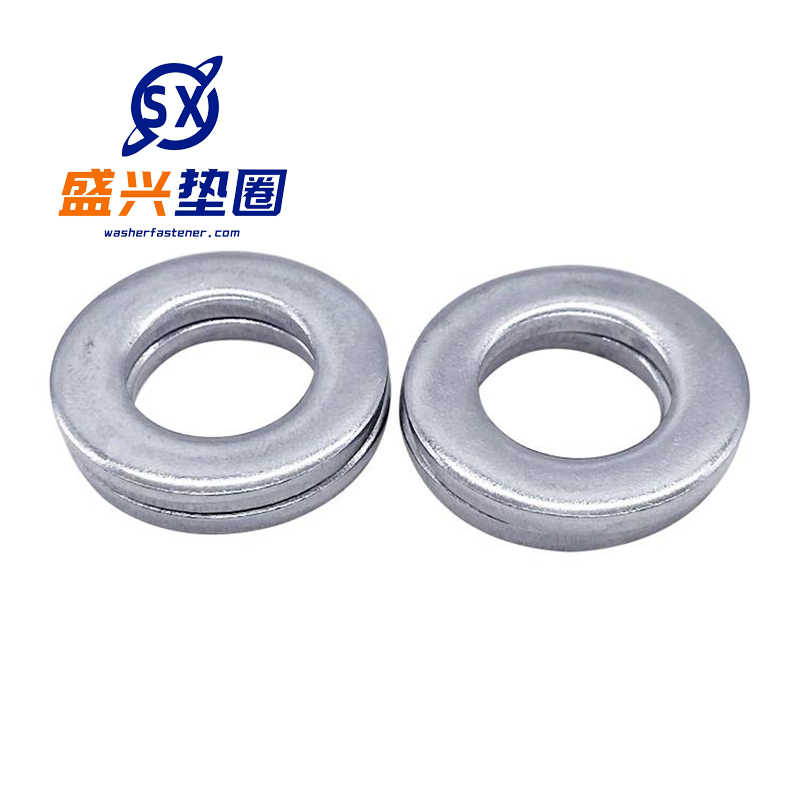
Flat light gasket
Widely used in many fields such as mechanical manufacturing, automotive industry, aerospace, electronic appliances, construction, etc. In mechanical assembly, used to fix various components; Plays a role in sealing, fastening, and adjusting clearances in automotive engines, chassis, and other parts; In the aerospace field, ensuring the stable connection and reliable sealing of key components of aircraft; In electronic and electrical products, it is used for fixing and insulating circuit boards.
Global vision, win-win cooperation
With excellent product quality and good market reputation, Shengfeng Hardware Fasteners not only occupy a place in the domestic market, but also actively explore the international market and carry out import and export business of goods and technology.
Latest Blog and Articles
We warmly welcome friends to cooperate with us.

news
How does Skar Ray innovate for industrial sustainability?
Content Understanding the Context Technological Innovations Challenges and Learning Experiences Case Studies and Real-World Applications Moving Forward The path to industrial sustainability often seems like navigating through a labyrinth of challenges, with companies like Skar Ray at the forefront of shaping innovative solutions. While many assume sustainability simply means adopting greener practices, it’s far more complex and nuanced, involving an interplay of technology, efficiency, and long-term strategy. Understanding the Context Skar Ray operates in an environment characterized by rapid technological shifts and intensifying environmental concerns. The challenge is not only about implementing sustainable practices but doing so in a way that remains economically viable. This balance is often misunderstood as a trade-off, when in reality, effective sustainability can drive profitability. Consider the case of materials sourcing. While it might be tempting to choose cheaper, less sustainable materials, Skar Ray invests in researching alternatives. This includes developing composites from recycled goods or refining production processes to reduce waste. It’s an investment that pays off in the long run, both in terms of cost savings and brand reputation. Another common pitfall is the underestimation of process efficiency. True innovation lies in optimizing every step of the production line, from energy consumption to waste management. At Skar Ray, this means embracing IoT technology to monitor and improve equipment efficiency, leading to reductions in both energy use and emissions. Technological Innovations Technological advancements are at the core of Skar Ray’s strategy. By integrating smart technologies, they not only improve operational efficiency but also move towards zero waste. For example, using AI-driven analytics to predict maintenance needs helps avoid unnecessary machine downtime and prolongs equipment lifespan. Additionally, the company’s collaboration with tech startups puts them in a position to experiment with breakthrough innovations. Take the use of advanced robotics to reduce human error and inefficiencies—this form of automation not only ensures product quality but also enhances workplace safety. Partnerships with educational institutions further aid innovation by fostering an environment where new ideas can be tested and refined. By securing access to a pool of emerging talents and research expertise, Skar Ray continuously taps into cutting-edge technologies. Challenges and Learning Experiences It’s not without hurdles. Early attempts at incorporating renewable energy sources faced significant pushbacks due to initial high costs and integration challenges. However, this experience taught valuable lessons in scalability and aligning upgrades with overall business objectives. One ongoing challenge is aligning growth targets with sustainability goals. This requires a dynamic approach to planning, involving cross-departmental collaborations. For effective implementation, Skar Ray developed internal metrics to evaluate the sustainability impact, ensuring alignment with business performance metrics. Learning from such experiences has helped hone a more flexible yet consistent strategy. The ability to pivot and adapt has been critical, ensuring that sustainability initiatives bolster rather than hinder growth. Case Studies and Real-World Applications In practice, Skar Ray has applied these innovations across various projects with significant success. A key project involved upgrading existing machinery to more energy-efficient models, resulting in a 30% reduction in energy consumption over two years. This not only demonstrated the financial viability but also bolstered client trust. Another example involves the supply chain. Skar Ray’s commitment to sustainable practices extends to supplier partnerships, emphasizing eco-friendly materials and ethical labor practices. This holistic approach enhances overall supply chain resilience and sustainability impact. By sharing these successes, Skar Ray sets a benchmark in the industry, encouraging others to integrate sustainability in practical, economically sound ways. Moving Forward Looking ahead, the future of industrial sustainability at Skar Ray involves scaling these innovations globally. As a framework, the principles applied here can be adapted to various contexts and industries, representing a scalable sustainability strategy. The journey involves constant learning, adapting to technological advances, and maintaining laser-focused strategic goals. The commitment to sustainability drives innovation and competitive advantage, with potential to transform industry standards. As more companies like Skar Ray demonstrate the feasibility of integrating sustainable practices, industry-wide shifts become increasingly tangible and attainable. For further information or collaboration opportunities, consider exploring partnerships with firms like Handan Shengfeng Hardware Fastener Factory, accessible via their website, who share similar values of innovation and sustainability in industrial practices.
Read More 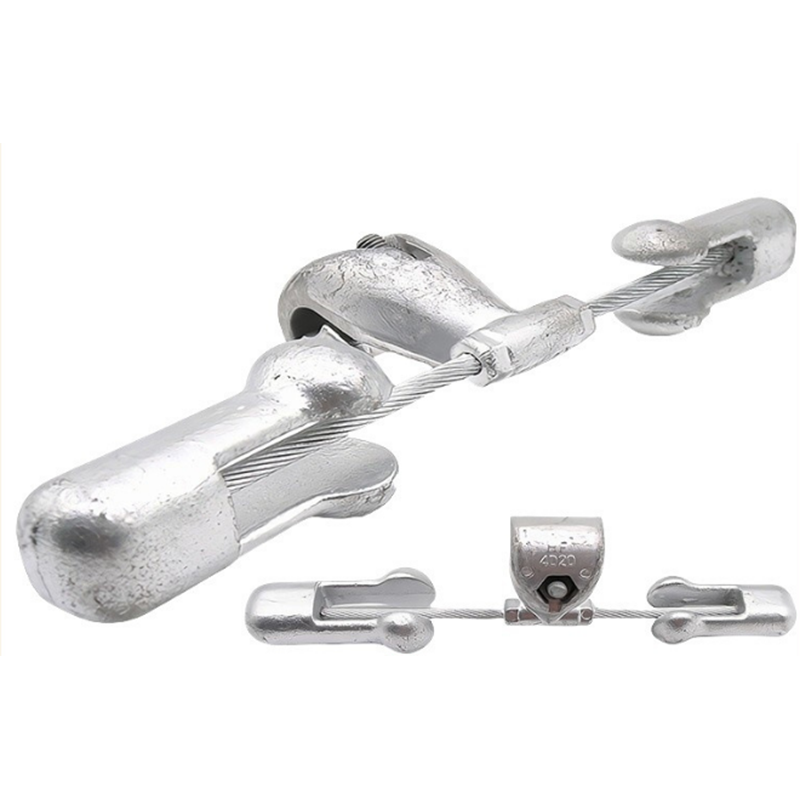
news
How do socket cover screws impact sustainability?
Content The Hidden Significance of Material Choice Role in Lifecycle Management Installation and End-of-life Factors Challenges in Achieving Full Sustainability The Bigger Picture: Systemic Change Needed Socket cover screws, while seemingly minor in the grand scheme of building components, can have a surprising impact on sustainability. Their influence ranges from material choices to lifecycle considerations, affecting both environmental outcomes and cost efficiency. The Hidden Significance of Material Choice When we talk about sustainability, the material of the socket cover screws is often overlooked. It’s easy to think nails or beams carry all the weight, but these little components matter. For example, at Shengfeng Hardware Fastener Factory, where we manufacture fasteners including these screws, we’ve found that choosing recyclable materials can significantly cut waste. The choice between stainless steel and ordinary steel may just seem a matter of cost and aesthetics, yet it has deeper ramifications. Stainless steel, being more durable and less prone to corrosion, inherently extends the lifecycle of the product, reducing the need for frequent replacements. Furthermore, sourcing materials responsibly, as practiced in our Handan factory located conveniently near major transport routes, diminishes carbon footprints associated with long-haul deliveries. This often-overlooked step can scale up when you’re producing millions of fasteners annually. Role in Lifecycle Management Lifecycle management isn’t just a buzzword; it plays out in how durable we manufacture our socket cover screws to be. The idea here is simple: the longer the screws last, the fewer are needed over time. Less frequent replacements mean fewer resources consumed—a direct line to sustainability. However, achieving this in practical terms poses challenges. It often comes down to precision in manufacturing and quality control, ensuring every screw produced at our factory lives up to expectations. Miss this mark, and you negate the sustainability gains. One promising approach we’ve integrated at Shengfeng is investing in efficient manufacturing technologies. By reducing waste in our processes, both literally and energy-wise, we move closer toward a more sustainable operation overall. Installation and End-of-life Factors The ease of installation also ties neatly into the sustainability equation. Engineers and builders we supply often mention how a well-designed screw reduces installation time and error rates—less tool wear and tear, lower labor costs, fewer wasted components. Yet, in the realm of fasteners, end-of-life isn’t often addressed. Can these screws be recycled at the end of their utility? In our factory, we’re exploring partnerships with recycling firms to close this loop, an evolution from simply selling to truly securing the lifecycle. It’s about creating systems that make recycling feasible, even profitable. As part of our operational plans, being on National Highway 107 offers logistical ease in retrieving old components from various collection points. Challenges in Achieving Full Sustainability Achieving full sustainability in socket cover screws isn’t straightforward. The challenges range from variable market demands to the inconsistency in raw material supplies. Each batch could tell a different sustainability story, contingent on these fluctuating elements. Moreover, while we at Shengfeng strive to maintain sustainable practices, the balancing act between cost-effectiveness and ecological responsibility sometimes conflicts. How do you keep prices competitive when sustainable materials generally cost more? By continuously investing in research and development, the goal is to innovate in both materials and processing methods, ultimately achieving a balance. It’s an ongoing learning curve, one we navigate daily. The Bigger Picture: Systemic Change Needed At the end of the day, small as they are, screws might drive industry-wide changes. If regulations and standards highlight their importance, the ripple effect can advance sustainable practices broadly. It’s about redefining what detailed manufacturing looks like. Collaboration is crucial. Industries, regulation bodies, and manufacturers must align. Engaging with initiatives through formal channels can accelerate change, making sustainability the norm, not just an advantage. In conclusion, the impact of socket cover screws on sustainability is profound, multifaceted, and evolves as new practices and technologies emerge. By looking at every element from afar and up close, manufacturers like Shengfeng can contribute to a more sustainable future.
Read More 
news
How do socket head bolts aid in sustainability?
Content The Role of Design in Resource Efficiency Durability and Longevity Streamlining the Assembly Process Environmental Impact in Material Choice Conclusion: A Commitment to Sustainable Practices In the world of fasteners, the modest socket head bolt often flies under the radar, yet its role in sustainability is less frequently discussed but worth a deeper dive. My years in this industry have taught me that understanding these bolts’ actual impact calls for a practical perspective and, perhaps more importantly, addresses certain common misconceptions. The Role of Design in Resource Efficiency When considering sustainability, the first thing that comes to mind is typically material efficiency. Socket head bolts provide a unique advantage here due to their design. With reduced material usage compared to traditional bolts, they contribute to lower resource consumption without sacrificing strength. This might seem small at first, but across multiple applications, it adds up significantly. From my experience, this design efficiency goes a long way in manufacturing processes where every gram saved counts. I’ve seen plenty of cases where the choice of socket head bolts versus conventional hex bolts made substantial differences in the overall weight of assemblies, contributing to enhanced resource utilization. But here’s an interesting twist: using socket head bolts doesn’t just help in designing lighter products. It can also impact logistics positively, as reduced weight translates to lower transportation emissions — something that’s often overlooked in early design stages. Durability and Longevity Coming from an industrial background, I can tell you that one of the primary aspects of sustainability is product longevity. Socket head bolts are renowned for their robustness and, importantly, their hidden head design, which tends to offer better protection against external elements. A colleague of mine once pointed out how switching to socket head bolts in marine applications significantly extended the lifespan of equipment. It wasn’t just the bolts themselves; it was the entire assemblies that benefited. The maintenance cycles extended, waste reduced — both key ingredients for sustainability. Sure, the initial costs might be a bit higher, but when looking at the bigger picture, this often results in cost savings and lower environmental impact over time. From a sustainability viewpoint, this trade-off seems more than justified. Streamlining the Assembly Process Now, let’s move on to the assembly line, where socket head bolts truly shine. Their design facilitates easy tooling, which has constantly been a game-changer in high-volume manufacturing environments I’ve worked with. Faster, efficient assembly means less energy consumed per unit produced. We’ve implemented socket head bolts at Shengfeng Hardware Fastener Factory, and an unexpected benefit was the reduction in tool wear. This leads to extended lifespans of tools — a small but significant contributor to sustainability in any plant. It’s also worth noting that the precise fit of socket head bolts allows for fewer errors (and therefore rework) during assembly. Less rework naturally leads to less waste — a win for both efficiency and sustainability goals. Environmental Impact in Material Choice Material selection plays a huge role in sustainability, and socket head bolts offer flexibility regarding the types of materials used. Some innovative solutions involve recycled or eco-friendlier materials that don’t compromise on performance. At our facility, located conveniently at Hebei Pu Tiexi Industrial Zone, we’ve increasingly looked at adopting such materials in our manufacturing processes. It’s not just about the bolts themselves but about the overall impact, aligning with our mission to promote responsible manufacturing. This flexibility also allows for customization to meet specific environmental standards, proving that socket head bolts can adapt to evolving regulatory demands — something every manufacturer now has on their radar. Conclusion: A Commitment to Sustainable Practices So there you have it, a real-world look at how socket head bolts contribute to sustainability. It comes down to their efficient design, durability, and how they streamline production. While these might seem niche points, they snowball into significant contributions over time. If you’re striving towards sustainability in your projects, don’t overlook these bolts. In practical terms, they offer a means to align engineering reality with environmental ideals. Our fastener factory in Handan City, accessible at our website, embodies this commitment through continuous innovation and improvement. In these shifting times, small changes matter, and the socket head bolt is a perfect example of how subtle design efficiencies and material considerations can lead to significant sustainability outcomes.
Read More 



